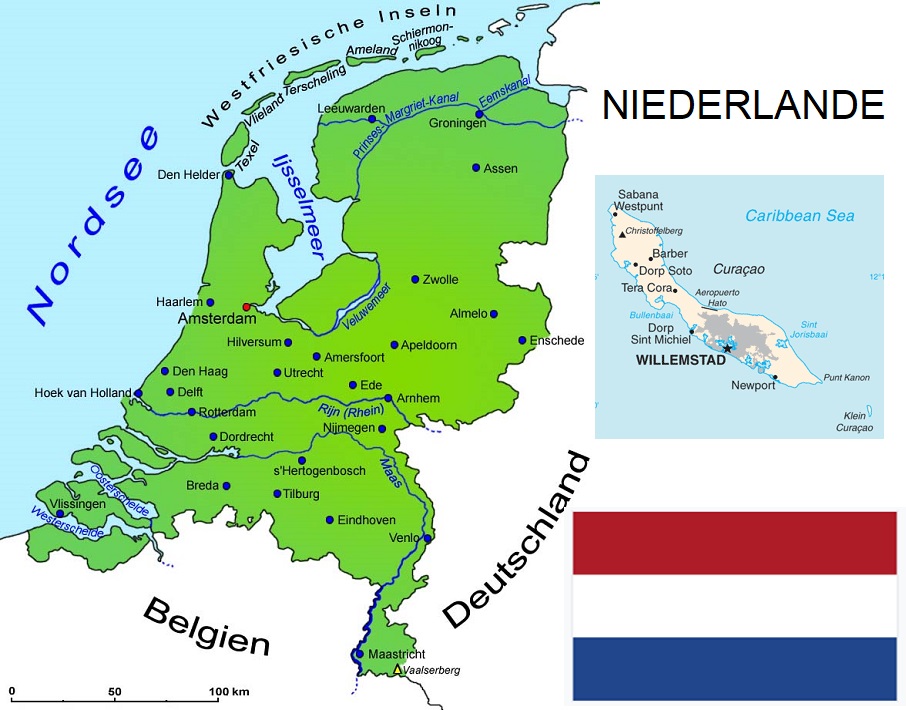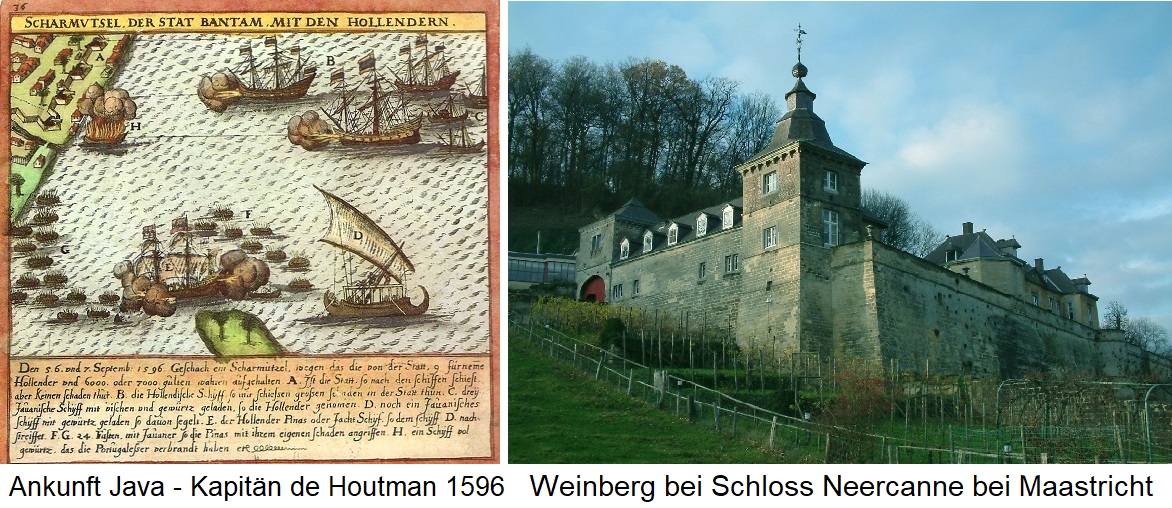Results
2,284 Results
Loading more Results ...
Loading more Results ...
Wine regions in Netherlands 3 growing regions
Description to Netherlands
The Kingdom of the Netherlands (Dutch: Nederland and Frisian: Nederlân), with its capital Amsterdam and seat of government in The Hague, consists of four autonomous countries in Europe (heartland) and in the Caribbean (3 islands) north of the equator. The heartland, which is largely located in northern Western Europe, covers 41,543 km² and is bordered by the North Sea to the north and west, Belgium to the south and Germany to the east. The Netherlands is divided into twelve provinces. Together with neighbouring Belgium and Luxembourg, they form the Benelux countries.

The three island groups of Bonaire (288 km²), Sint Eustatius (21 km²) and Saba (13 km²) form the Caribbean Netherlands and have the status of "Bijzondere Gemeenten" (special municipalities) of the country. Other Dutch Caribbean territories are not part of the Netherlands, but are autonomous countries within the Kingdom of the Netherlands with their own constitution, currency and government. The head of state is the respective Belgian king or queen, who is represented by a governor. These are Aruba (179 km²), Curaçao (444 km²) and Sint Maarten (34 km²).
History
Holland (the heartland of today's Netherlands) had a major influence on the spirits and wine trade in the late Middle Ages. From the end of the 16th century, Holland rose to become the leading maritime power, far ahead of England, France, Portugal and Spain. By 1650, Holland had the largest merchant fleet in the world with around 10,000 ships. Alcoholic beverages were purchased all over Europe and transported by ship to the colonies in North America, the Dutch East Indies (Indonesia), New Zealand and Tasmania. The Dutch were also the main suppliers to European countries. The port of Rotterdam developed into a major transhipment centre for wine. The Dutch were great masters of distillation and produced huge quantities of jenever (grain wine) and brandewijn (brandy), which was used either pure or as an addition to wine and drinking water. The resulting shelf life was a prerequisite for the long voyages.

Influence on European viticulture
As a result, the spriting of wines such as Malaga, Madeira, port and sherry became established. The Dutch are also to thank for the triumph of cognac, as they inspired the winegrowers of Charente to distil their wine. The English, who imported cognac in large quantities and set certain quality standards, contributed to its perfection. In order to increase the supply of popular wines, blending with simple wines was practised excessively.
The Dutch also adapted quickly and flexibly to consumer demands. When the demand for sack (fortified wines from Spain) and sweet wines increased in England in the 16th century, large quantities of such wines were imported from Spain, the Canary Islands, the Portuguese island of Madeira and the Greek island of Crete. As a result, Holland played a significant role in the development of certain types of wine and acquired extensive knowledge of storage, transport and trade. Due to their specialised knowledge of this technique, it was also the Dutch who drained the swamps in the French Médoc in the mid-17th century and created the basis for the rapid upswing in viticulture. There is evidence of viticulture in the southern province of Limburg dating back to 1324.
Viticulture in the Netherlands
The introduction of beer, the deteriorating climate in the wake of the Little Ice Age, phylloxera and the conquest of the Netherlands by Napoleon (1769-1821) virtually wiped out viticulture, but the last vineyard near Maastricht was not abandoned until 1946. It was then revived on a small scale at the end of the 1960s.
There are the country wine areas(PGI) Drenthe, Flevoland, Friesland, Gelderland, Groningen, Limburg, Noord-Brabant, Noord-Holland, Overijssel, Utrecht, Zeeland and Zuid-Holland as well as the two quality wine areas(PDO) Mergelland and Maasvallei Limburg (cross-border together with Belgium). Important grape varieties are Auxerrois, Chardonnay, Gewürztraminer, Müller-Thurgau, Riesling, Pinot Gris, Pinot Blanc and Pinot Noir. Due to their low alcohol content, the wines usually have to be fortified. The best-known winery in the Netherlands is Apostelhoeve near Maastricht. However, the demand for wine is covered by imports, mainly from Germany. Viticulture could gain in importance due to climate change.
Map: © Goruma
Flag: by Zscout370 - Own work, Public domain, Link
Arrival Java: By Levinus Hulsius, Public domain, Link
Vineyard: By Pivos, CC BY-SA 3.0, Link
Source 1st paragraph: WIKIPEDIA Netherlands


